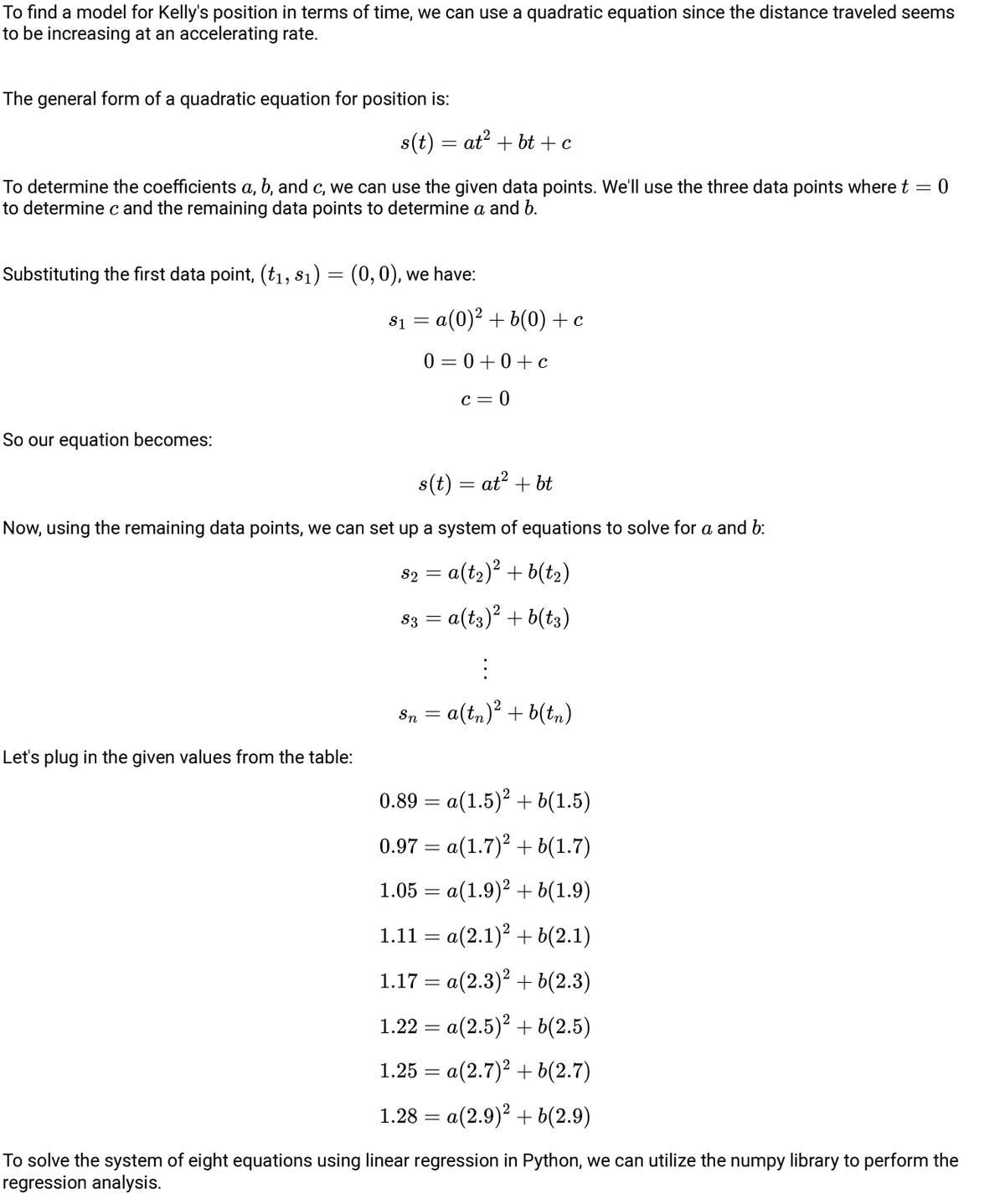TABLE 16.3 Kelly Schmitzer skating data t (sec) s (m) t (sec) s (m) t (sec) s (m) 1.5 0.89 3.1 1.30 0.1 0.07 1.7 0.97 3.3 1.31 0.3 0.22 1.9 1.05 3.5 1.32 0.5 0.36 2.1 1.11 3.7 1.32 0.7 0.49 2.3 1.17 3.9 1.32 0.9 0.60 2.5 1.22 4.1 1.32 1.1 0.71 2.7 1.25 4.3 1.32 1.3 0.81 2.9 1.28 4.5 1.32
Minimization
In mathematics, traditional optimization problems are typically expressed in terms of minimization. When we talk about minimizing or maximizing a function, we refer to the maximum and minimum possible values of that function. This can be expressed in terms of global or local range. The definition of minimization in the thesaurus is the process of reducing something to a small amount, value, or position. Minimization (noun) is an instance of belittling or disparagement.
Maxima and Minima
The extreme points of a function are the maximum and the minimum points of the function. A maximum is attained when the function takes the maximum value and a minimum is attained when the function takes the minimum value.
Derivatives
A derivative means a change. Geometrically it can be represented as a line with some steepness. Imagine climbing a mountain which is very steep and 500 meters high. Is it easier to climb? Definitely not! Suppose walking on the road for 500 meters. Which one would be easier? Walking on the road would be much easier than climbing a mountain.
Concavity
In calculus, concavity is a descriptor of mathematics that tells about the shape of the graph. It is the parameter that helps to estimate the maximum and minimum value of any of the functions and the concave nature using the graphical method. We use the first derivative test and second derivative test to understand the concave behavior of the function.
Coasting to a stop Table 16.3 shows the distance s (meters)
coasted on in-line skates in terms of time t (seconds) by Kelly
Schmitzer. Find a model for her position in the form.
Her initial velocity was v0= 0.80 m/sec, her mass m = 49.90 kg (110 lb), and her total coasting distance was 1.32 m.

As per the question, we are tasked with finding a mathematical model for Kelly Schmitzer's position in terms of time while coasting on in-line skates. We are provided with a table showing the distance she coasted in meters for various time intervals.
Using this data, along with her initial velocity, mass, and total coasting distance, we will determine a quadratic equation that represents her position as a function of time.
By fitting the data points to the equation, we can find the coefficients and establish a model that describes Kelly's motion while coasting.

Python Code :
import numpy as np
# Given data points
t = np.array([1.5, 1.7, 1.9, 2.1, 2.3, 2.5, 2.7, 2.9])
s = np.array([0.89, 0.97, 1.05, 1.11, 1.17, 1.22, 1.25, 1.28])
# Construct the matrix A and vector b
A = np.vstack([t**2, t]).T
b = s
# Use linear regression to solve the system of equations
coefficients, residuals, _, _ = np.linalg.lstsq(A, b, rcond=None)
# Extract the coefficients
a = coefficients[0]
b = coefficients[1]
# Display the coefficients
print(f"a: {a}")
print(f"b: {b}")
Code Output :
a: -0.10881418726475356
b: 0.7577663226819888
[Program finished]
Step by step
Solved in 3 steps with 1 images









